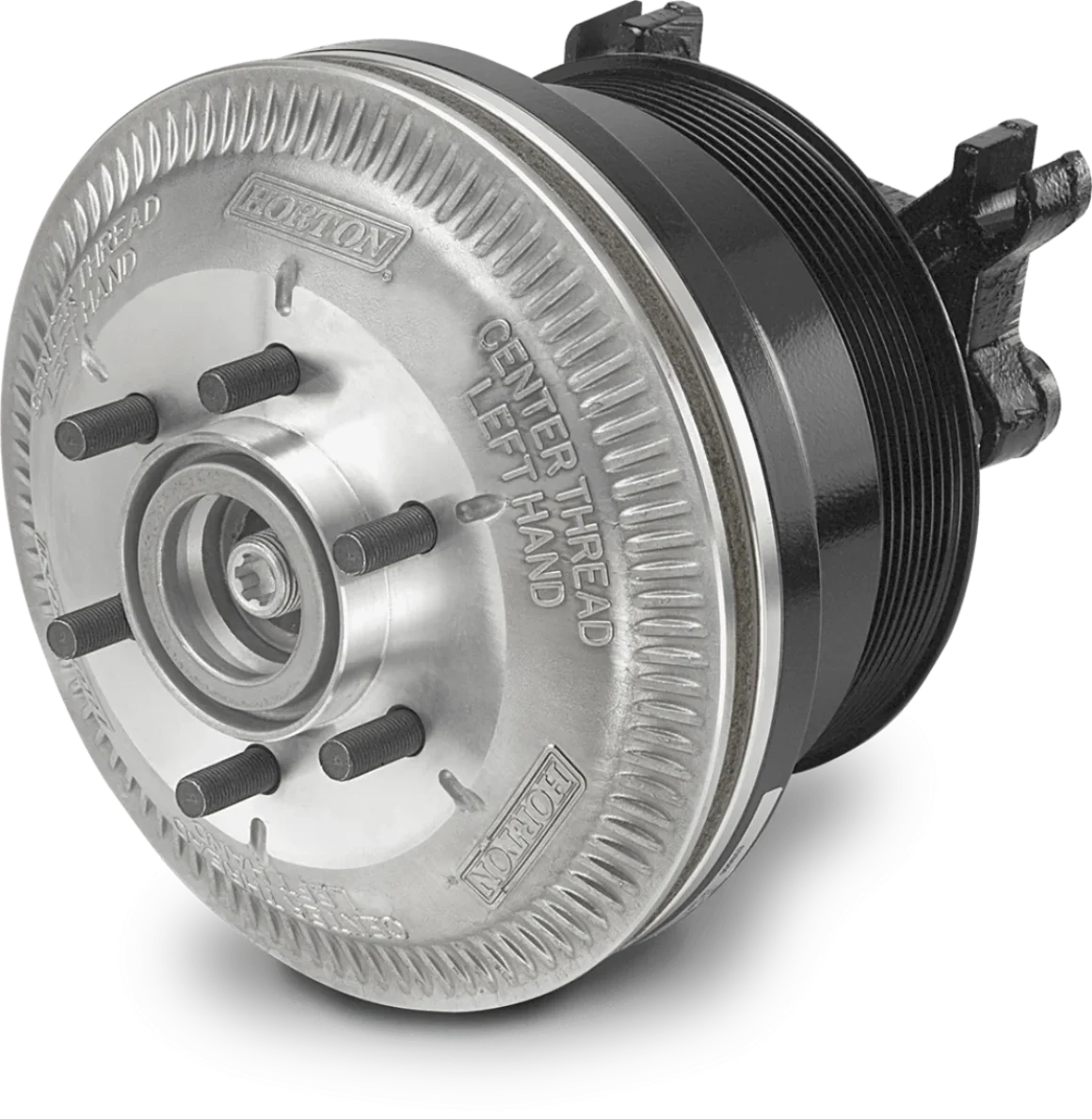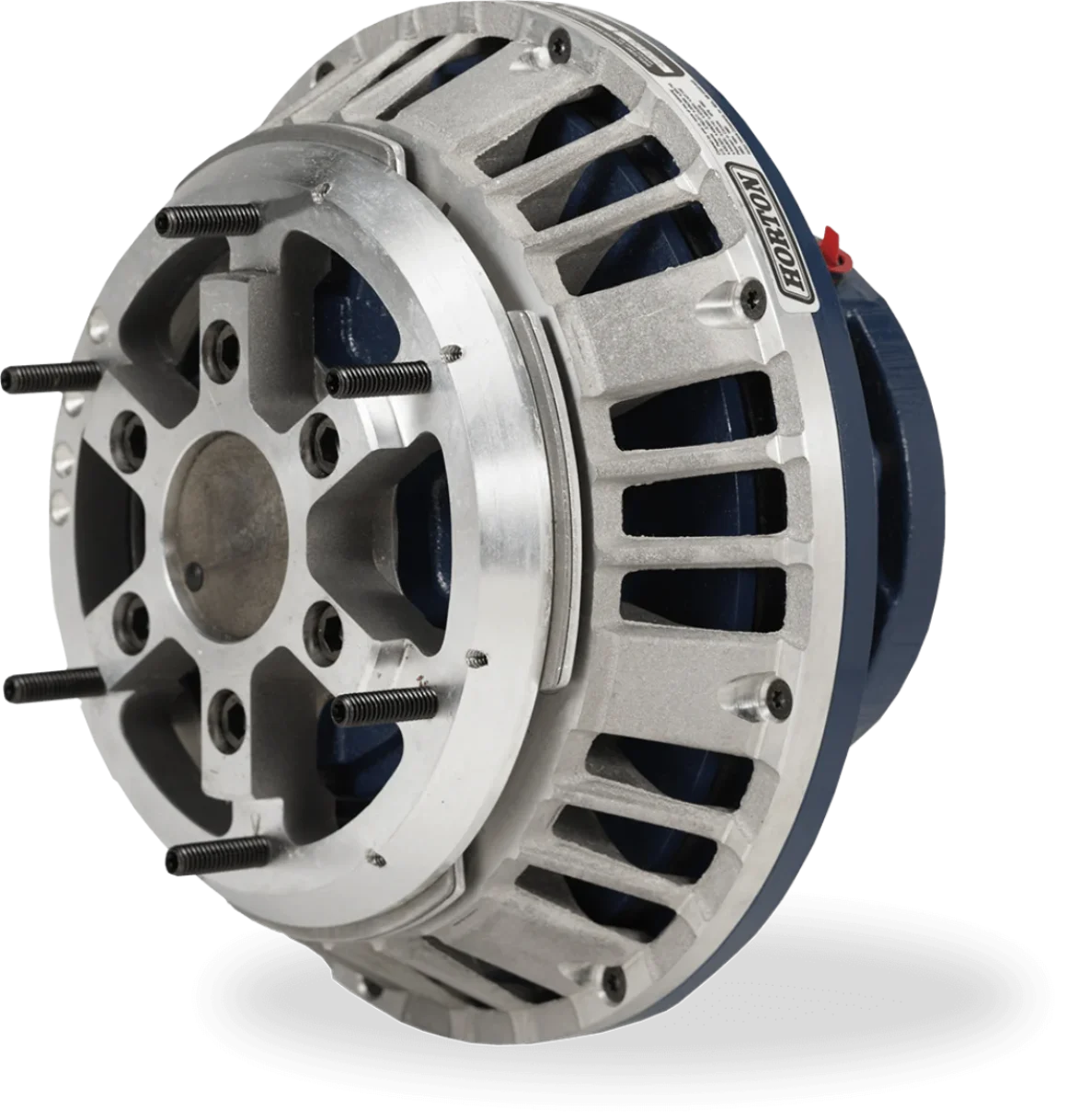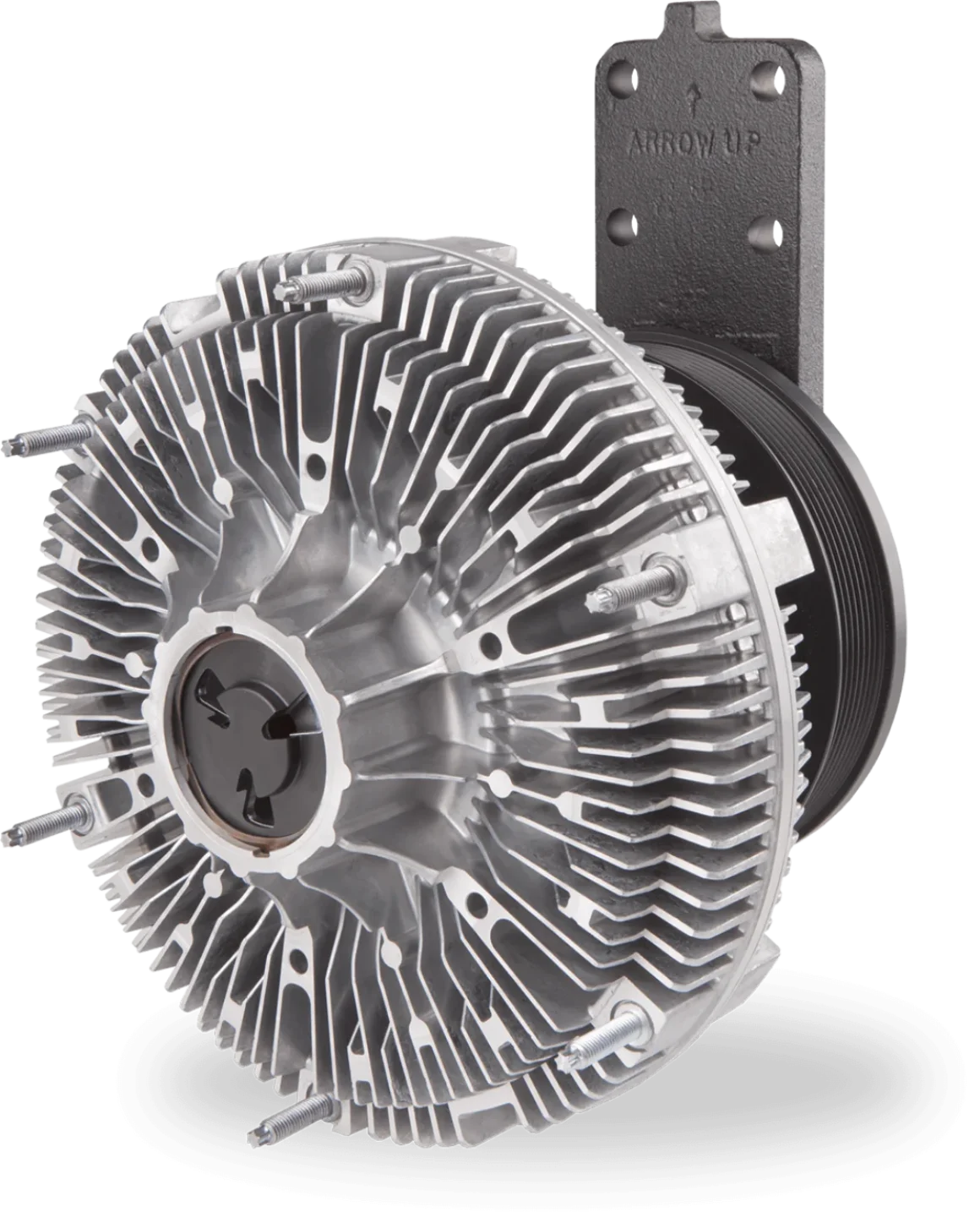Understanding Fan Clutches: On/Off, Two-Speed, and Variable Speed
May 29, 2025
In today’s world of advanced vehicle and equipment engineering, efficiency, performance, and reliability are critical. At the heart of thermal management systems in many on- and off-highway applications is a key component: the fan clutch. Fan clutches help regulate engine temperature, reduce fuel consumption, and minimize emissions by controlling the engagement of the engine cooling fan. But not all fan clutches are the same. In fact, there are three common types: On/Off, Two-Speed, and Variable-Speed fan clutches.
Let’s take a closer look at how each type works and why choosing the right one matters.
On/Off Fan Clutches: Simple and Proven

How IT Works
On/Off fan clutches operate on a basic binary principle—either fully engaged or fully disengaged—making them the most straightforward fan drive design in the market. The system is governed by a temperature signal that determines whether cooling is needed.
There are two common types of control inputs for On/Off clutches:
- Bimetallic Sensor-Controlled:
Traditional On/Off clutches use a bimetallic coil spring mounted on the clutch face that reacts to ambient underhood temperature. As the temperature rises, the coil expands and rotates, opening a valve that allows silicone fluid to engage the clutch mechanism and turn the fan at full engine speed. - Electronically Controlled (EC):
In modern applications, electronic control modules (ECMs) send signals to solenoids or air valves based on real-time engine data—typically coolant temperature, intake air temperature, or air conditioning demand. This allows for more accurate and responsive fan engagement compared to purely mechanical systems.
Fan Engagement Cycle:
- Disengaged Mode:
When the engine temperature is within optimal range, the clutch is disengaged, allowing the fan to “freewheel” at a much lower speed than the engine. This reduces parasitic drag, improves fuel efficiency, and cuts down on noise. - Engaged Mode:
As the engine temperature rises past a calibrated threshold, the clutch activates, locking up and rotating the fan at full engine speed. This provides maximum airflow through the radiator and other heat exchangers, quickly lowering coolant temperatures.
Once cooling is achieved and the temperature drops, the clutch returns to its disengaged state—repeating the cycle as necessary.
Why It Matters
While On/Off clutches may lack the precision of more advanced designs, they’re proven, robust, and cost-effective. Their durability makes them ideal for vehicles operating in consistent load environments or moderate climates, such as:
- Medium-duty trucks
- School buses
- Utility vehicles
- Certain off-highway equipment
They also offer easier serviceability and fewer failure points compared to variable-speed systems, which is a major advantage in fleets prioritizing uptime and simple maintenance.
Performance Considerations:
- Fuel Efficiency: Moderate — improved over direct-drive fans, but less efficient than two-speed or variable-speed systems.
- Noise Reduction: Limited — since the fan operates at full speed during engagement, it can create noticeable fan roar.
- Cooling Control: Basic — sufficient for standard-duty cycles, but not ideal for engines with variable cooling demands or emissions-sensitive components.
Two-Speed Fan Clutches: A Step Up in Control

How It Works
Two-speed fan clutches are designed to deliver more nuanced engine cooling than traditional On/Off systems. Rather than operating in just two extreme states—fully on or fully off—a two-speed clutch offers two distinct levels of fan engagement: a low-speed mode for partial cooling, and a high-speed mode for full cooling demand.
This is typically accomplished through an internal mechanism that modulates the amount of silicone fluid—or controls air pressure in the case of air-actuated clutches—allowing the fan to engage at a reduced speed (often 40-60% of full fan speed) before ramping up to full engagement as temperatures rise further.
Control Systems:
- Electronically Controlled: An ECU monitors temperature, vehicle speed, engine load, A/C demand, and other data to determine whether low- or high-speed cooling is necessary. Solenoids or valves then modulate airflow or fluid pressure to adjust fan speed accordingly.
- Temperature-Triggered Backup: Many two-speed fan clutches also have a built-in thermal override (e.g., bimetallic coil) that ensures full engagement if electronic control fails or if overheating conditions are detected.
Fan Engagement Cycle:
- Low-Speed Mode:
When engine temperatures are rising but not critically high, the clutch engages the fan at partial speed. This allows sufficient airflow to maintain thermal balance without overcooling, while also reducing fan noise and conserving energy. - High-Speed Mode:
As demand increases—such as during uphill driving, heavy payloads, or high ambient temperatures—the clutch switches to full-speed engagement, delivering maximum airflow to protect the engine and auxiliary systems.
Why It Matters
Two-speed fan clutches provide a middle ground between the simplicity of On/Off designs and the precision of variable-speed drives. They reduce unnecessary full-fan engagements, saving fuel and lowering emissions while still ensuring robust cooling under heavy loads.
Typical applications include:
- Refuse and recycling trucks
- Buses with frequent stop-and-go driving
- Severe-duty vocational trucks
- Construction and mining equipment with fluctuating workloads
Performance Considerations:
- Fuel Efficiency: Improved — reduced high-speed fan engagement lowers parasitic load on the engine.
- Noise Reduction: Moderate — less fan roar compared to On/Off systems, especially in low-speed mode.
- Cooling Control: Enhanced — better temperature stability across a broader range of operating conditions.
Variable-Speed Fan Clutches: Precision and Efficiency

How It Works
Variable-speed fan clutches represent the most advanced technology in engine cooling. These systems continuously modulate fan speed in real-time based on a wide range of engine and vehicle parameters. Rather than cycling between discrete steps, they adjust the fan’s speed smoothly and precisely to match cooling demand.
This dynamic control is typically achieved using:
- Pulse Width Modulated (PWM) signals from the ECM
- Proportional air pressure regulators
- Smart actuators that interpret temperature, engine load, vehicle speed, and A/C compressor activity
By only spinning the fan as fast as needed, variable-speed clutches deliver just the right amount of airflow—no more, no less.
Fan Engagement Cycle:
- Low to Medium Speed Range:
In cool or moderate conditions, the fan may spin at a fraction of full speed (as low as 10-30%), minimizing drag on the engine and reducing fuel consumption and noise. - High-Speed Response:
As thermal load increases, the fan smoothly ramps up—without sudden jumps—to deliver increased airflow and maintain stable coolant temperatures. Unlike step-change systems, this continuous engagement ensures a more stable operating temperature, which is especially important for emission control systems like EGR and SCR.
Why It Matters
Variable-speed fan clutches are essential in today’s high-efficiency, low-emissions powertrains. They support:
- Fuel savings by minimizing parasitic losses
- Tighter temperature control, which helps engines operate in their optimal performance and emissions zones
- Improved driver comfort, thanks to quieter operation and smoother engagement
Ideal for:
- Long-haul and regional haul trucks
- Transit and motor coaches
- Equipment operating in extreme climates or high altitudes
- Any application requiring tight thermal control or subject to emissions regulations (EPA, CARB, EU)
Performance Considerations:
- Fuel Efficiency: Highest — only the necessary amount of fan speed is used.
- Noise Reduction: Excellent — smoother operation dramatically reduces fan-related noise.
- Cooling Control: Optimal — fine-tuned, real-time modulation provides unmatched thermal management.
Choosing the Right Clutch
Selecting the right fan clutch is about understanding your application’s cooling needs, fuel economy goals, and operating environment. At Horton, we offer a full line of fan clutch solutions engineered to deliver the right balance of performance, durability, and cost-efficiency.
Whether you’re managing a fleet of vocational trucks, designing off-highway equipment, or optimizing a transit bus, Horton has the expertise and product range to help you make the right choice.
Explore our full line of fan drives and thermal management solutions at https://www.hortonww.com/cooling-solutions/fan-drives-clutches/